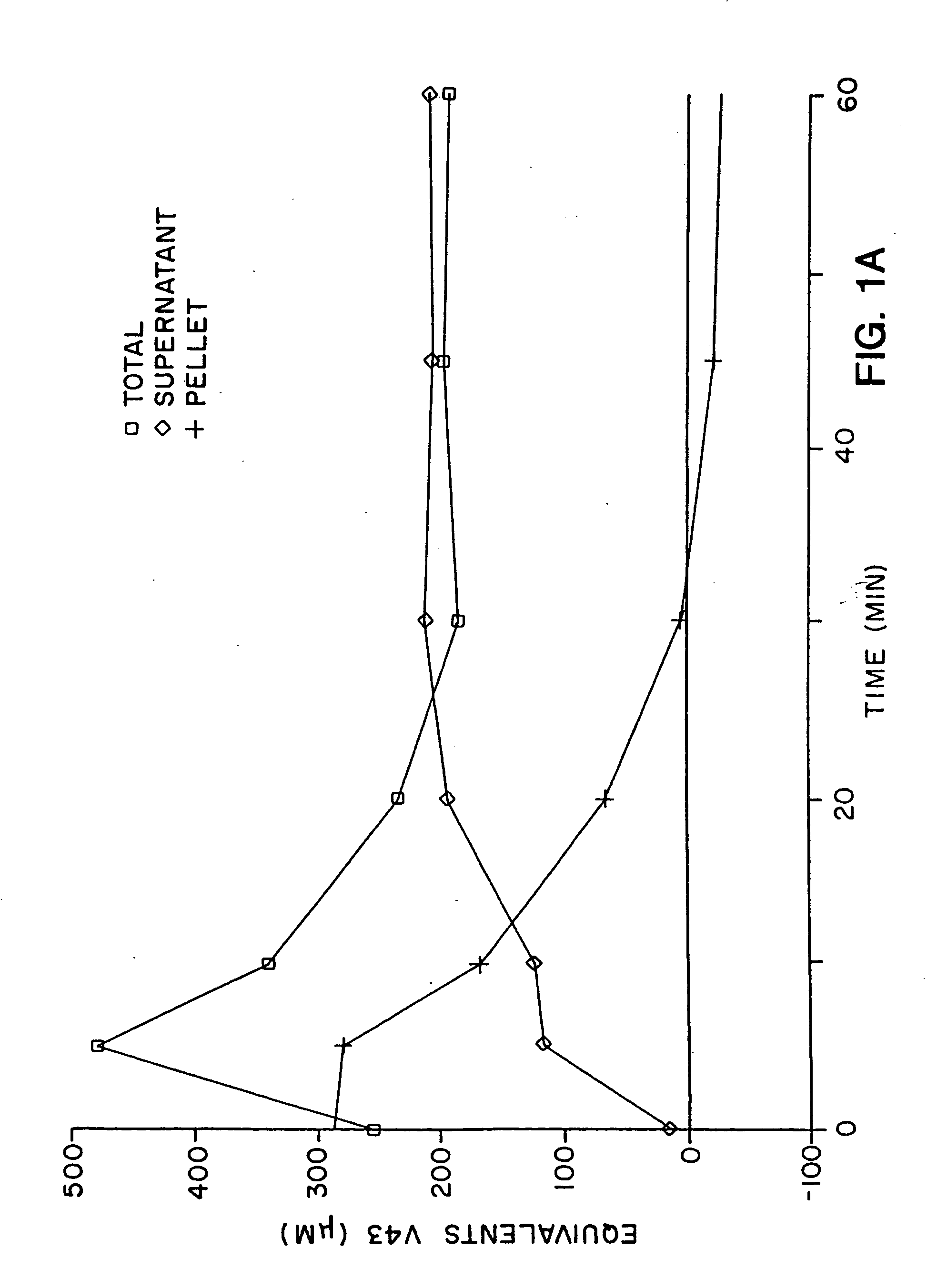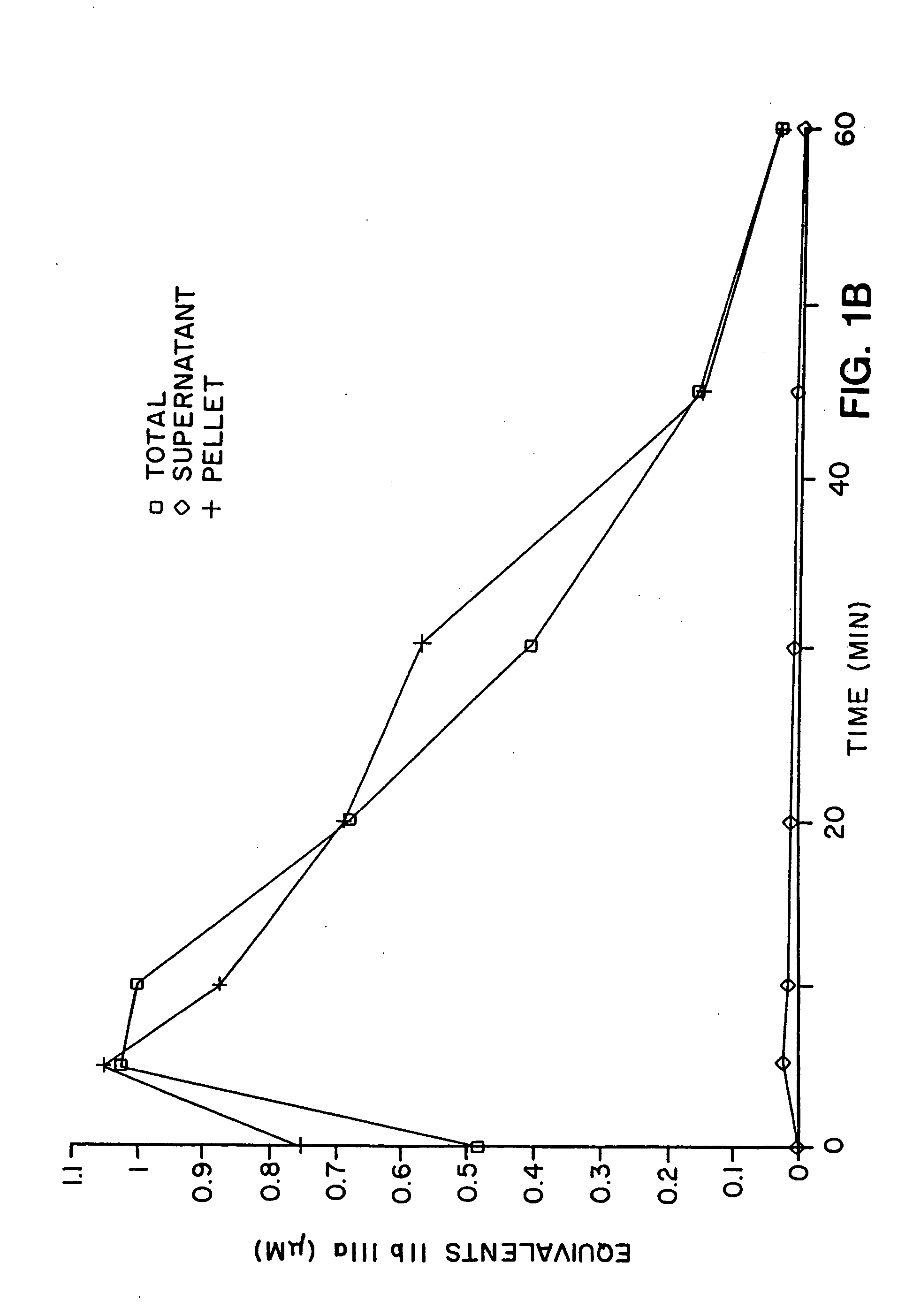In vitro methods for determining in vivo thrombotic events
a thrombotic event and in vitro method technology, applied in the field of in vitro methods for determining in vivo thrombotic events, can solve the problem that the simple activation of platelets in vitro with agonists is not sufficient to release the c-terminal hgpiib fragment, and achieve the effect of monitoring thrombolysis
- Summary
- Abstract
- Description
- Claims
- Application Information
AI Technical Summary
Benefits of technology
Problems solved by technology
Method used
Image
Examples
examples
[0150] 1. Preparation of Substantially Isolated C-Terminal hGPIIb Fragment
[0151] a. Platelet Isolation
[0152] One unit of whole human blood was collected in ACD (0.065 M citric acid, 0.085 M sodium citrate, 2% dextrose) containing hirudin (Sigma Chemical Co., St. Louis, Mo.) at a final concentration of 0.06 units per milliliter (U / ml) and centrifuged for 15 minutes (min) at 120×g. The resulting supernatant, designated platelet-rich plasma (PRP), was recovered, isolated and further centrifuged for 15 min at 1200×g to form a pellet of isolated platelets. The supernatant formed was collected and designated platelet-poor plasma (PPP).
[0153] b. GPIIb-IIIa Isolation from Platelets
[0154] A platelet pellet prepared as in Example 1a, was resuspended in 5 ml TBS (0.15 M NaCl, 0.2 M Tris, pH 7.4, 5×10−4 M CaCl2, 10−5 M leupeptin) and sonicated on ice for 10 min at a maximum setting using a Model W-375 sonicator (Heat Systems Ultrasonics, Plainview, N.Y.). The sonicated suspension was twice ...
PUM
| Property | Measurement | Unit |
|---|---|---|
| molecular weight | aaaaa | aaaaa |
| MW | aaaaa | aaaaa |
| time | aaaaa | aaaaa |
Abstract
Description
Claims
Application Information
 Login to View More
Login to View More - R&D
- Intellectual Property
- Life Sciences
- Materials
- Tech Scout
- Unparalleled Data Quality
- Higher Quality Content
- 60% Fewer Hallucinations
Browse by: Latest US Patents, China's latest patents, Technical Efficacy Thesaurus, Application Domain, Technology Topic, Popular Technical Reports.
© 2025 PatSnap. All rights reserved.Legal|Privacy policy|Modern Slavery Act Transparency Statement|Sitemap|About US| Contact US: help@patsnap.com


